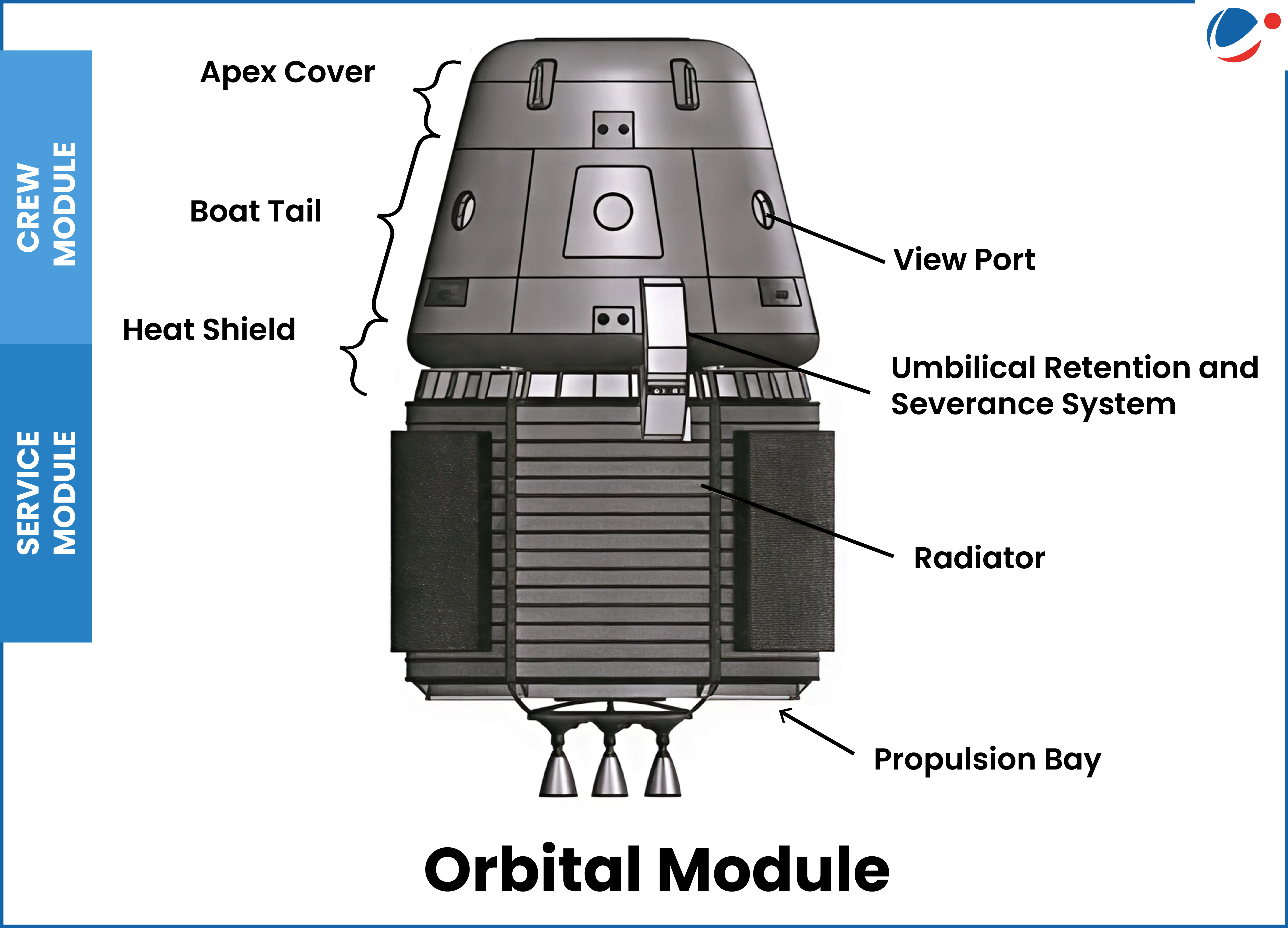The successful completion of Test Vehicle Abort Mission-1 (TV-D1) Mission and the first uncrewed Test Vehicle Abort Mission laid a strong foundation for the upcoming test schedule.
- The second Test Vehicle Mission (TV-D2) will be followed by the uncrewed orbital flights of Gaganyaan.
- Gynoid (female robot) Vyommitra will undertake the first uncrewed mission of Gaganyaan.
About Gaganyaan Mission
- Objectives: Demonstrate India’s human spaceflight capability by launching crew of 3 members to an orbit of 400 km (Low Earth Orbit) for a 3 days mission and bring them back safely to earth, by landing in Indian sea waters.
- Components of the Gaganyaan Mission
- The Launch Vehicle Mark-3 (LVM-3): Formerly known as the GSLV Mk-III, it is a three-stage rocket with:
- First stage: Two solid-fuel boosters strapped to the rocket core.
- Second stage: Powered by two liquid-fuelled, clustered Vikas 2 engines.
- Third stage: Equipped with the CE-20 indigenous cryogenic engine, using liquid hydrogen and liquid oxygen as fuel and oxidiser, respectively.
- The Orbital Module: It weighs 8.2 tonnes and is the object launched into low Earth orbit by the LVM-3 rocket (See image). It consists of two main parts:
- The Launch Vehicle Mark-3 (LVM-3): Formerly known as the GSLV Mk-III, it is a three-stage rocket with:
The Orbital Module | |
Crew Module:
Service Module:
|  |



